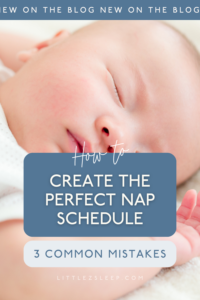Have you ever wondered what is an ideal wake time for your baby for long and restful naps? Are you confused by nap schedules and infant sleep? If you have a baby four months or older, this blog and video are for you! I’m going to teach you how to measure the awake windows for your child so you can nail the nap timing every time.
WHAT ARE AWAKE WINDOWS?
So what are awake windows in the first place?
An awake window is simply the time between waking and sleeping. This could mean waking for the day and going down for the first nap. Or, the time between waking from nap 2 until going down for nap 3.
EXAMPLE AWAKE WINDOW SCHEDULE
So how can we start and stop awake times? When do we start the clock?
This is not for newborns, but for babies 4 months to 3 years old, the awake window begins when you get your child out of the crib or out of the bed.
They might have opened their eyes 10 or 15 minutes prior, but I want you to start the awake window from when you get them out of the crib. The awake time window will go until you are now walking out of the room and the child is ready to put themselves back to sleep.
You decide when these awake windows begin. And because you are in tune with when your baby needs a nap, you know exactly when this will be.
Here’s an example: The most common nap schedule for a baby between 6-14 months, is a nap schedule that has three awake windows from when they get up in the morning until they go down for bed at night.
Awake Time #1: Between Morning Waking and Nap 1
Awake Time #2: Between Nap 1 and Nap 2
Awake Time #3: Between Nap 2 and Bedtime
Let’s say your child has a 7:00 AM wake time. Because your baby is not a robot, they might wake at 6:55 AM, but the awake window begins at 7:00 AM. If your awake time is set for 2.5 hours, you might have one to two feedings, depending on if you’re nursing or feeding with a bottle. You can play and hold your baby after that, but at 2.5 hours, you put your child back into their crib for their first nap at 9:30 AM.
They should ideally put themselves to bed independently. What if your child has trouble falling asleep without your help?
I’ve got you! I help families implement a sleep training plan so that their child can sleep independently so we can all be happy, healthy, and well-rested. Inside our Little Z’s Sleep Training Courses, you can learn everything you need to make sleep a thing for your family!
If your child is able to put themselves down independently, what if they play for 10 minutes before falling asleep? Doesn’t that actually mean they are awake for 2 hours and 40 mins?
Maybe so. But here’s the thing, children aren’t robots and you’ve honored the awake window. They can be awake for 2.5 hours. They have the opportunity to fall asleep within a few minutes after you leave the room. That’s how we timed the awake windows.
THREE MISTAKES PARENTS MAKE WITH WAKE TIMES
Mistake #1: Not having the right awake window for your child’s age
Your first awake window will be the shortest and it gets longer throughout the day. If you don’t know what awake window your child needs, click here and grab our free schedule generator.
Mistake #2: Using Sleepy Cues to Define Awake Windows
Often parents are using sleepy cues as the sign that their child is ready for sleep, not the actual schedule.
Sleepy cues are absolutely a thing. How many of you have seen your baby rub their eyes and ears, and then yawn? Those are definitely sleepy cues. While we do want to honor those cues, a random sleep cue could lead to a short nap because they weren’t tired and ready for a nap. That short nap might lead to a messed-up schedule because it ended too soon.
Mistake #3: Stressing about Awake Times
Take a deep breath. I love using awake windows, but what I hope happens is when you use these awake windows as a guide, you will start to see the patterns. This will emerge into a schedule.
I do not want you to calculating awake windows every single day. If that’s the case, it may be that your child doesn’t know how to sleep independently and you need to sleep train to get everything on the proper footing.
Awake windows should help you discover your own rhythm and your own schedule because you’ve honored the awake windows.
The biggest takeaway? Awake windows DO matter, but I don’t want you to stress about them. Work on a rhythm and a schedule.
By following our free schedule generator and these tips, you and your baby CAN have a nap schedule to be happy, healthy, and well rested while making sleep a thing!
LOVE THIS? PIN IT FOR LATER!

FLASH SALE
ONE WEEK ONLY
Keep sleep a thing on vacation with the Little Z's Travel Guide!